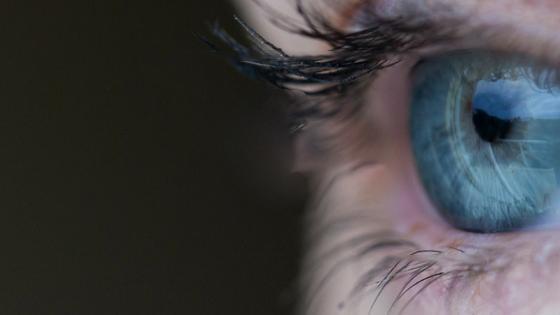Spending long hours working under intense indoor grow room lighting can have long-term and damaging effects on your eyesight. Just because the light works well for your plants, doesn’t mean it’s equally as beneficial to your vision.
Many growers have complained about the slow decline in their eyesight after growing indoors for much of their career.
You may have started to see dark spots, to experience frequent headaches, or maybe you’re finding it increasingly hard to read the fine print, even with your reading glasses on. Is your declining vision really due to the expensive light fixtures you’ve spent so much money to install?
Unfortunately for indoor-growers of all kinds, grow lights just weren’t developed for our human eyes. Both HPS and LED styles of indoor lights were designed to manipulate the natural light spectrum, increase the intensity of the sun’s rays, and achieve optimal indoor growing conditions.
They were not designed with the sensitive human eye in mind. Indoor lights turn up the intensity and refine the light spectrum to stimulate plant growth.
Just as the outdoor growers don’t stare straight into the sun, an indoor grower should always avoid looking directly into any intense light source. Both LED or HPS can still cause immediate and irreparable damage if the exposure is too intense. It's crucial to take special precautions when growing marijuana indoors, long-term exposure may cause series vision damage.
Can LED Lights Damage Your Eyes?
Increasingly the go-to lighting option for indoor growing, LEDs are popular because many cater specifically to the light spectrums needed during different stages of cannabis growth. The initial investment is not as prohibitive as it once was, and the overall cost savings in energy consumption are incomparable to the conventional HPS lights.
If LEDs are so good for the environment, why are they bad for your vision? Perhaps you’ve heard about the growing problem of blue light, as emitted from our cell phones and computer screens?
Blue light, which falls between 380 nm and 500 nm on the light spectrum, is linked to many health issues. Blue is also crucial for the vegetative stage of growth and is the primary spectrum produced by most LED grow lights.
Overexposure to blue light is linked to retina, macula and photoreceptors damage. On top of this, it influences the human sleep cycle in a way that researchers are just now coming to understand.
If you spend hours under blue light, and this is especially true for just before you go to bed, your bodies natural melatonin production gets thrown out of whack.

Can HPS Lights Damage Your Eyes?
Long an industry standard, many expert growers earned their chops working under these intense light sources. Some still prefer HPS lights over LED due to their sheer intensity, although newer LED models are starting to catch up in this regard.
High-pressure sodium lights, HPS lights, are intense. Just like the sun, indoor HPS lights are so harsh (at such close range) they can trigger irreversible damage to your vision. The typical HPS light fixture emits UVA, UVB, and UVC ultraviolet light, although at a lower intensity than the sun. Under the sun's rays humans are exposed to UVB and UVA, but, most of the UVC light is filtered out through the earth’s atmosphere. This is not so for indoor HPS grow lights.
Ultraviolet light is hazardous for human eyesight. Exposure to the ultraviolet spectrum, and especially the UVC portion, can lead to problems perceiving color, cataracts, and reduced night vision. If you grow under HPS lights, be sure to source a pair of specialized HPS grow-room glasses as regular sunglasses don’t offer protection from UVC rays.
Do LED Lights Emit UV?
The short answer? It really depends on what LED product you’ve installed.
Generally speaking, LED lights emit little to any UV light. However, some specialized companies have started to market new UV specific LED products.
Some crops, in particular, cannabis plants, thrive when exposed to UV light, and new models of LED lights have incorporated this spectrum into their design.
Today, some specialized products come with the UV diodes integrated alongside blue, red and white, while others offer a UV supplement bar. You’ll need to investigate to determine if your lights are emitting significant amounts of UV light.
Of course, HPS light fixtures emit some levels of UV light, hence the reason why it's so crucial to protect your vision. As mentioned, they emit three types of ultraviolet light, including UVA, UVB, as well as UVC.
Do LED Lights Cause Cancer?
Researchers are studying the effects of LED exposure and links to cancer, but they haven’t yet found a direct link. That said, early research indicates that long-term exposure to blue light at night reduces melatonin production, which could lead to the development of some cancers.
More and more people are investing in mobile apps and screen protectors which minimize the blue light emitted from screens, cultivators should take note of this trend. Grow room workers should use similar protection against the blue light exposure from LEDs. So long as nighttime exposure to blue LED is limited and the right eye protection is used, this potential cancer risk is reduced.
Is HPS light better for cancer risk?
While there isn’t any study on indoor exposure to ultraviolet light in the grow room, ultraviolet light from the sun is linked to skin cancer.
Again, there is little research done on indoor exposure to HPS, but we can assume that with long-term exposure and no-protection there is some risk associated with HPS.
At the end of the day, long-term exposure to any intense light source, including both, LED and HPS fixture types, comes with some risk for vision damage.
Specific light intensities and spectrums are great for grow rooms, but not so great for human eyesight. Thankfully, growers can take a few easy steps, like protective eyewear, to reduce the risk of indoor grow light exposure.





